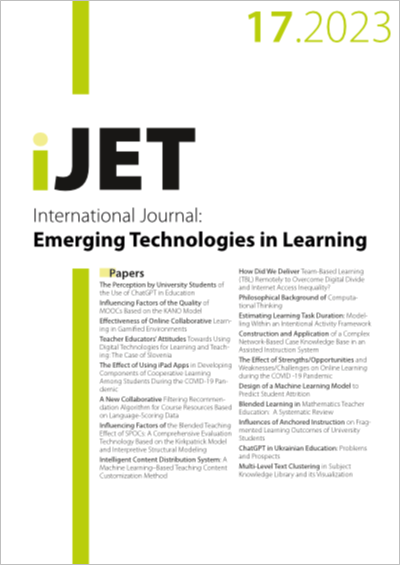The Effect of Using iPad Apps in Developing Components of Cooperative Learning Among Students During the COVID-19 Pandemic
DOI:
https://doi.org/10.3991/ijet.v18i17.41453Keywords:
Applications, Interactional Education, Covid-19 PandemicAbstract
The purpose of this research is to investigate the effects of iPad use in the enhancement of structure and factors of interactional education among students during the COVID-19 pandemic. In this respect, the educational community that emphasized using interactional traditional methods imposed social distancing due to rapid global changes in recent years and the COVID-19 pandemic. This directly affected the traditional educational methods, and many students were deprived of the positive effects of interactional education. For all the aspects of education to achieve their goals, electronic applications were used in education to fully accomplish the results of public education and specifically achieve interactional training. Modern studies and investigations recommend following scientific methods about the effects of technology, in general, and iPad applications, in particular. We investigated the consequences of learning from peer groups and interactional education. The results showed that students prefer interactional and cooperative learning to individual education. Finally, it is important to study the effect of using iPad applications in improving and updating educational interactional resources for students. In this research, we try to answer the question What is the effect of electronic applications on the improvement of interactional educational lessons among students during the COVID-19 pandemic? We studied the ways that students had access to the iPad during the course and the effectiveness of the resulting education as well as the reasons for what was or was not effective.
Downloads
Published
How to Cite
Issue
Section
License
Copyright (c) 2023 Dr. Ayesha Alktebi

This work is licensed under a Creative Commons Attribution 4.0 International License.



